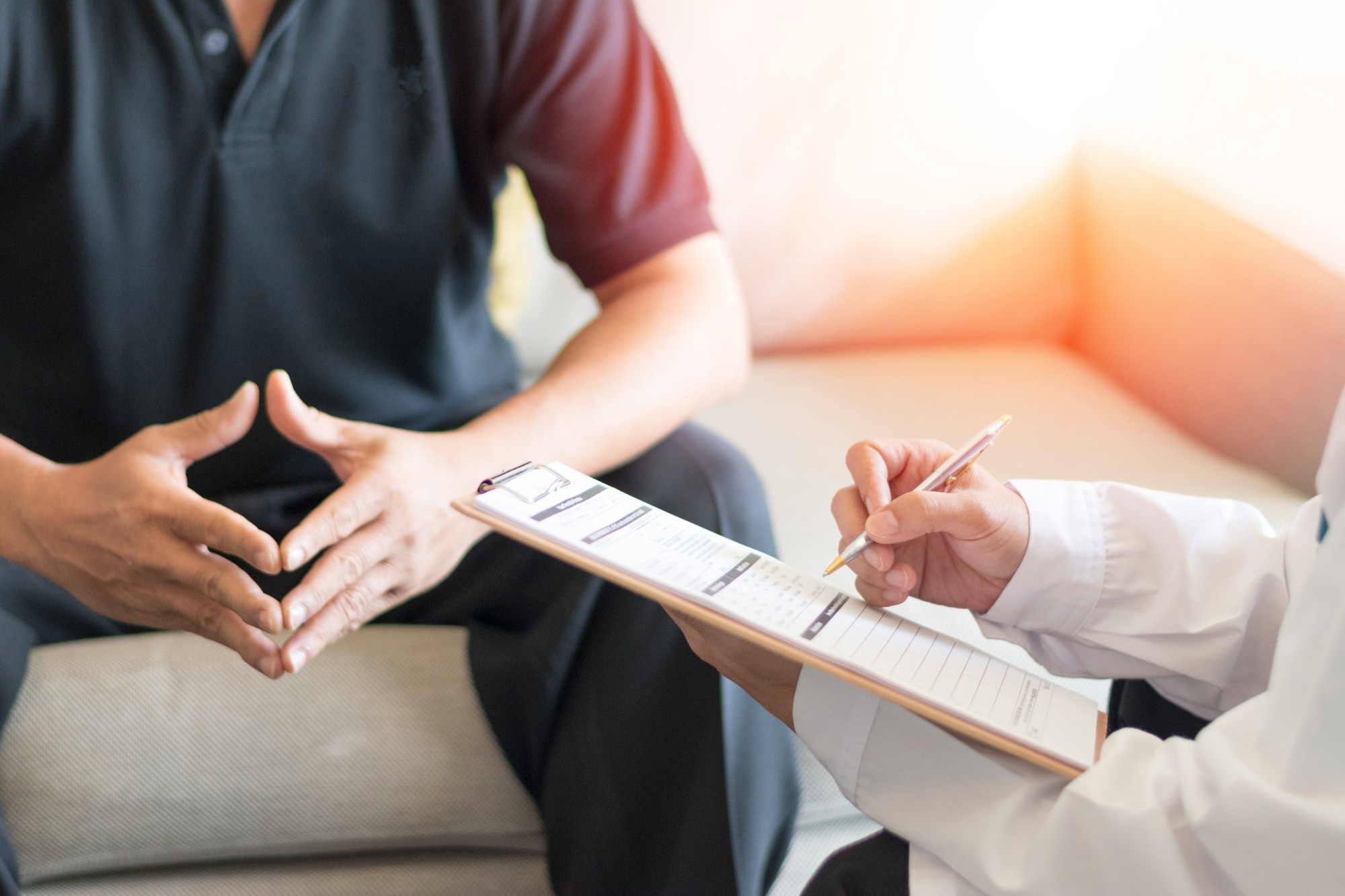In a recent study published in the Journal of Endocrinological Investigation, researchers assessed male reproductive health three months after coronavirus disease 2019 (COVID-19) infection.
 Study: Male reproductive health after 3 months from SARS-CoV-2 infection: a multicentric study. Image Credit: BlurryMe/Shutterstock
Study: Male reproductive health after 3 months from SARS-CoV-2 infection: a multicentric study. Image Credit: BlurryMe/Shutterstock
Background
Studies have identified the vulnerability of the male gender in experiencing severe acute respiratory syndrome coronavirus 2 (SARS-CoV-2) infection and increased mortality. This susceptibility to disease severity is possibly due to a combination of behavioral or lifestyle patterns, aging, comorbidities specific to males, intrinsic biological variations between the genders, hormones, or genetics.
Hence, the SARS-CoV-2 outbreak has elicited research focused on the impact of COVID-19 on male reproductive health.
About the study
In the present study, researchers performed a comprehensive estimation of the male reproductive health of SARS-CoV-2 patients three months after recovery.
The study included participants with a history of SARS-CoV-2 infection diagnosed between July 2020 and January 2021. Each participant was asked to undergo an andrological screening to estimate probable COVID-19 consequences. Eligible participants had a history of previous COVID-19 positive nasopharyngeal swabs detected from July 2020 to January 2021, and three months had passed since the disease recovery before study enrollment. The patients were aged between 18 and 65 years. Three months post-recovery, the patients underwent a physical examination and a testicular ultrasound and provided a blood and semen sample.
The team compared the semen parameters of the participants to those of healthy controls who were recruited before the prevalence of COVID-19 between 2018 and 2019. The control participants were categorized as control group 1 (CTR1), which included healthy normozoospermic subjects with no andrological diseases, and control group 2 (CTR2), which included healthy patients diagnosed with idiopathic infertility.
The semen samples collected were allowed to liquefy and assessed based on World Health Organization (WHO) recommendations. The assessments considered volume, total sperm number, progressive motility, and morphology. Additionally, a sperm viability test was performed to differentiate between cell death and immotility.
Furthermore, anti-sperm antibodies (ASA) detection was performed on the sperm surface, while an indirect ASA test was performed on seminal plasma and blood serum samples. Sperm DNA fragmentation (SDF) was also conducted, followed by an evaluation of hormones such as total testosterone, prolactin (PRL), luteinizing hormone (LH), and follicle-stimulating hormone (FSH). Sexual function was also analyzed based on the International Index of Erectile Function (IIEF-5) questionnaire.
Results
A total of 80 patients recruited had recovered from COVID-19. Also, two control cohorts who had never tested positive for SARS-CoV-2 infection were retrospectively selected, including 98 normozoospermic subjects from the CTR1 cohort and 98 infertile subjects from the CTR2 cohort. The case cohorts were similar by age and body mass index (BMI).
Additionally, 32 patients had mild, 22 had moderate, 15 had severe, and 11 had critical COVID-19. Notably, almost 88% of the patients reported fever throughout the infection.
The study results showed that the mean sperm viability among the patient groups was 63.8±15.0%. No remarkable difference was observed from the sperm viability value observed in the CTR1 group. The total sperm number, as well as the proportion of abnormal forms across the patient groups and CTR1, was comparable. At the same time, these parameters were significantly better in the post-COVID-19 participants than in the infertile control individuals.
Furthermore, while oligozoospermic subjects accounted for 16.2% of the total participants, 12.7% of the mild and 24.0% of the severe COVID-19 patients had oligozoospermia. The team found no notable differences between the semen samples obtained from both the control groups and the COVID-19-recovered subjects. There was also no significant correlation between sperm parameters and the history of COVID-19 severity or presence of fever three months after recovery.
Additionally, only 1.6% of the total direct assays performed were positive for immunoglobulin class. In comparison, only 3.9% of the gelatin agglutination tests (GATs) performed resulted in positive blood serum samples, while none of the semen plasma samples tested positive. Furthermore, the mean SDF% was found to be 14.1±7.0% via chromatin integrity analysis.
As compared to a normozoospermic control population, the team noted that both the %SDF values were similar. Moreover, %SDF values were comparable between different COVID-19 severity groups or between subjects who did and did not experience fever. However, there was a significant correlation between %SDF and patient’s age.
The total testosterone levels of only 6.2% of the subjects were less than the laboratory reference range of 10.4 nmol/l. Furthermore, hypogonadism was observed in similar proportions in the patient and the control groups. Notably, testosterone levels did not vary significantly across different COVID-19 severity groups.
Furthermore, erectile dysfunction was found in 30% of the participants. While there was no significant variation in the IIEF-15 domain across different disease severities, there was a decline in EF domain scores in the high disease severity groups.
Overall, the study findings showed that COVID-19 did not result in any direct adverse effect on testicular function, while there was a transient impact of fever, inflammation, and drugs.